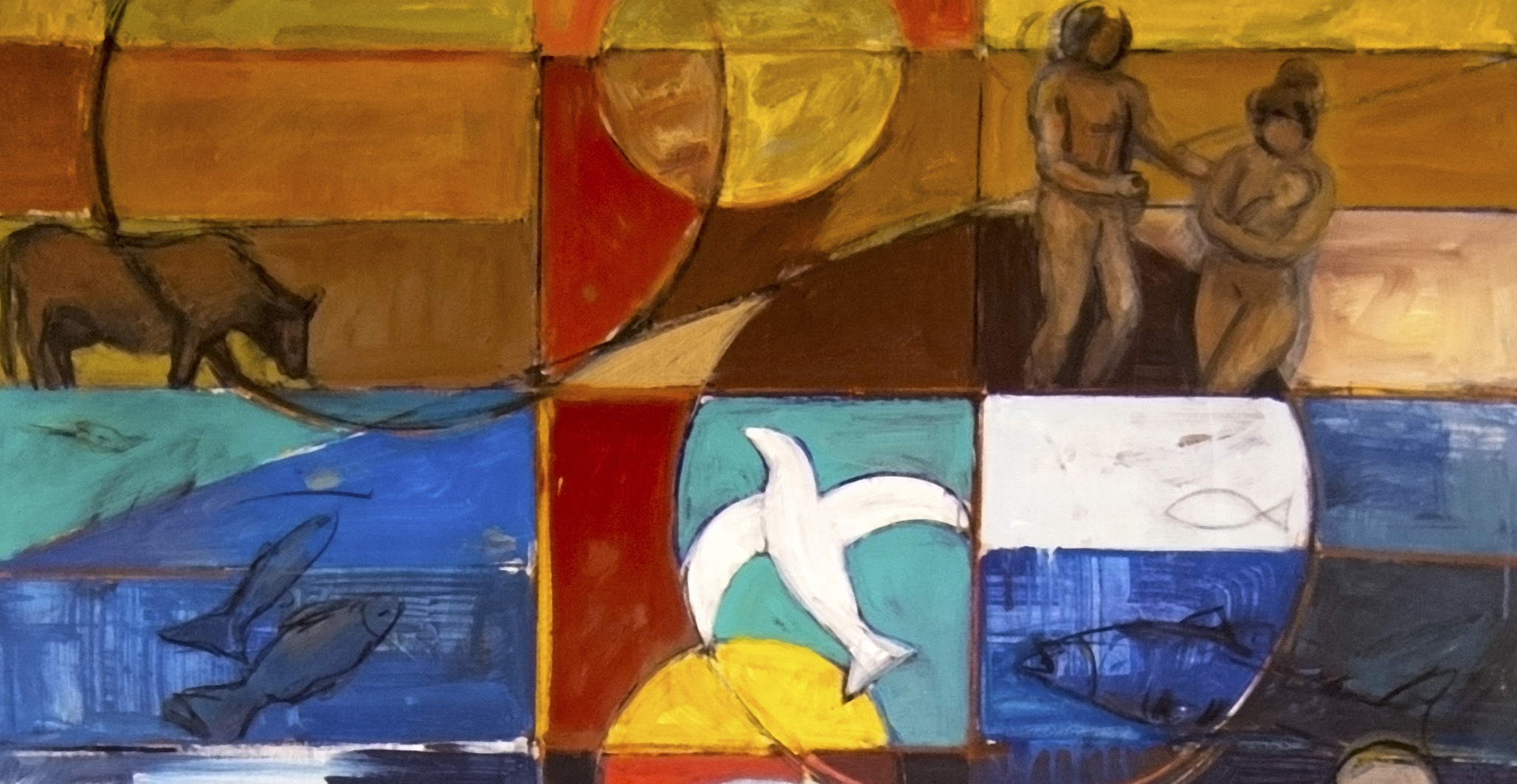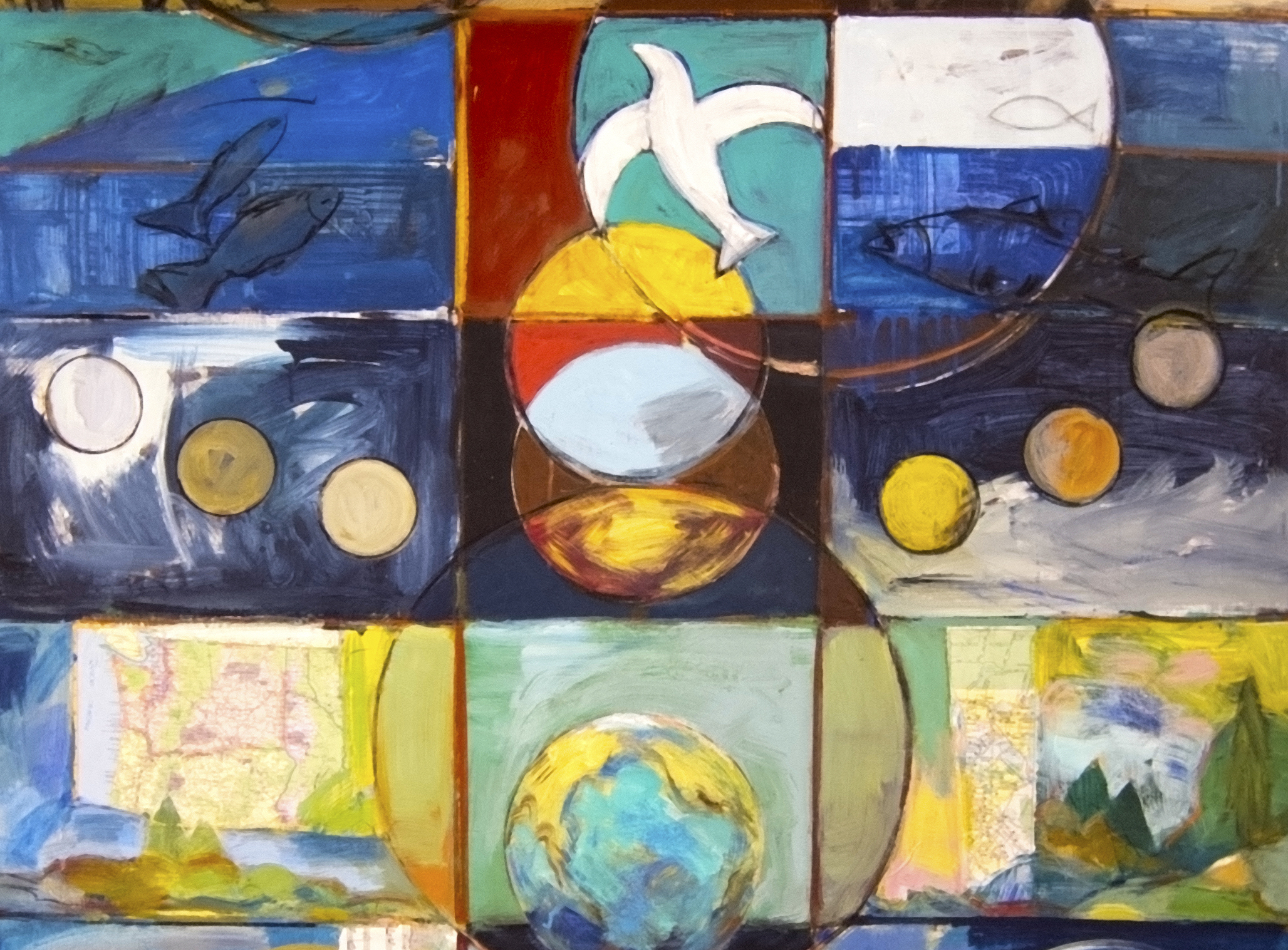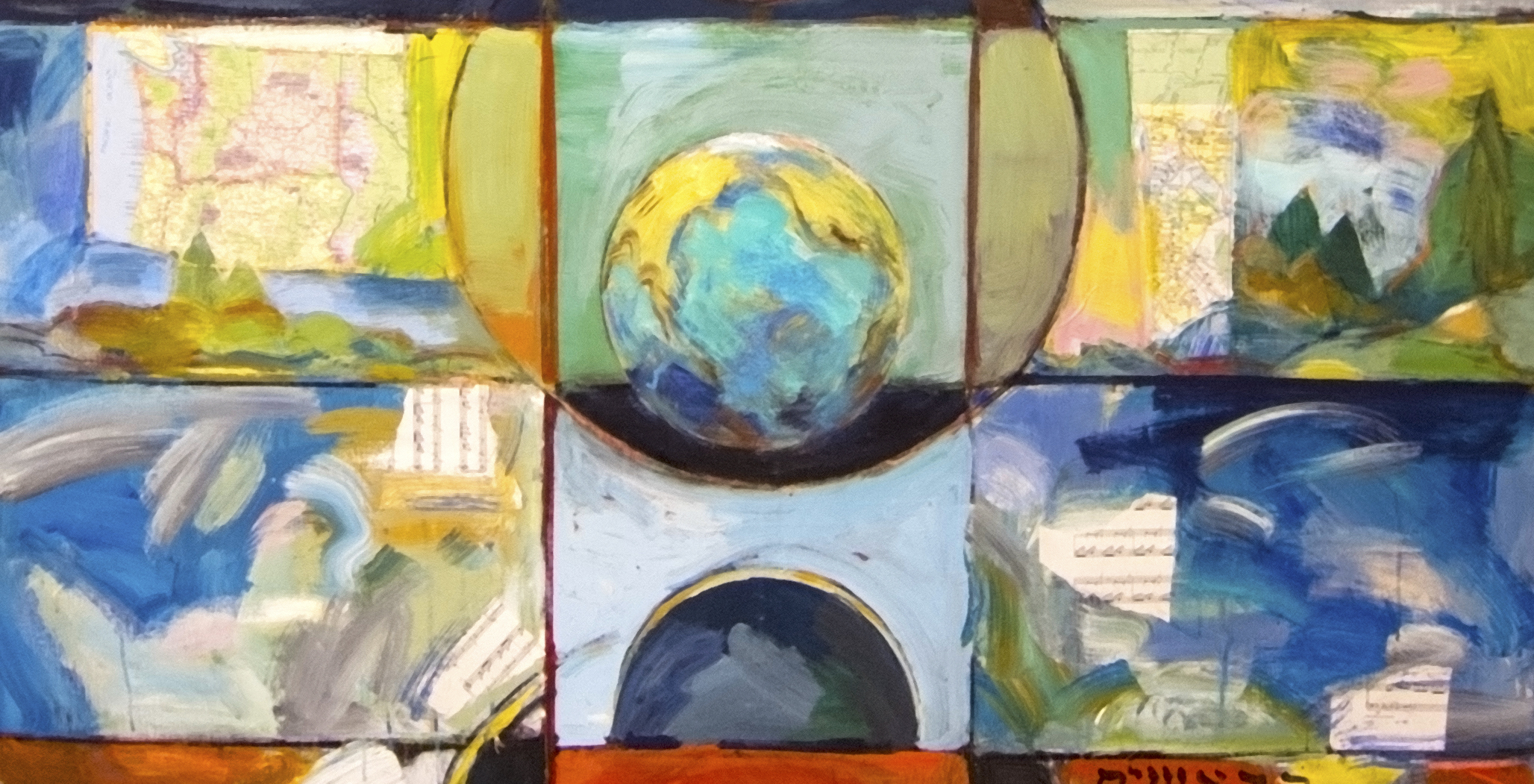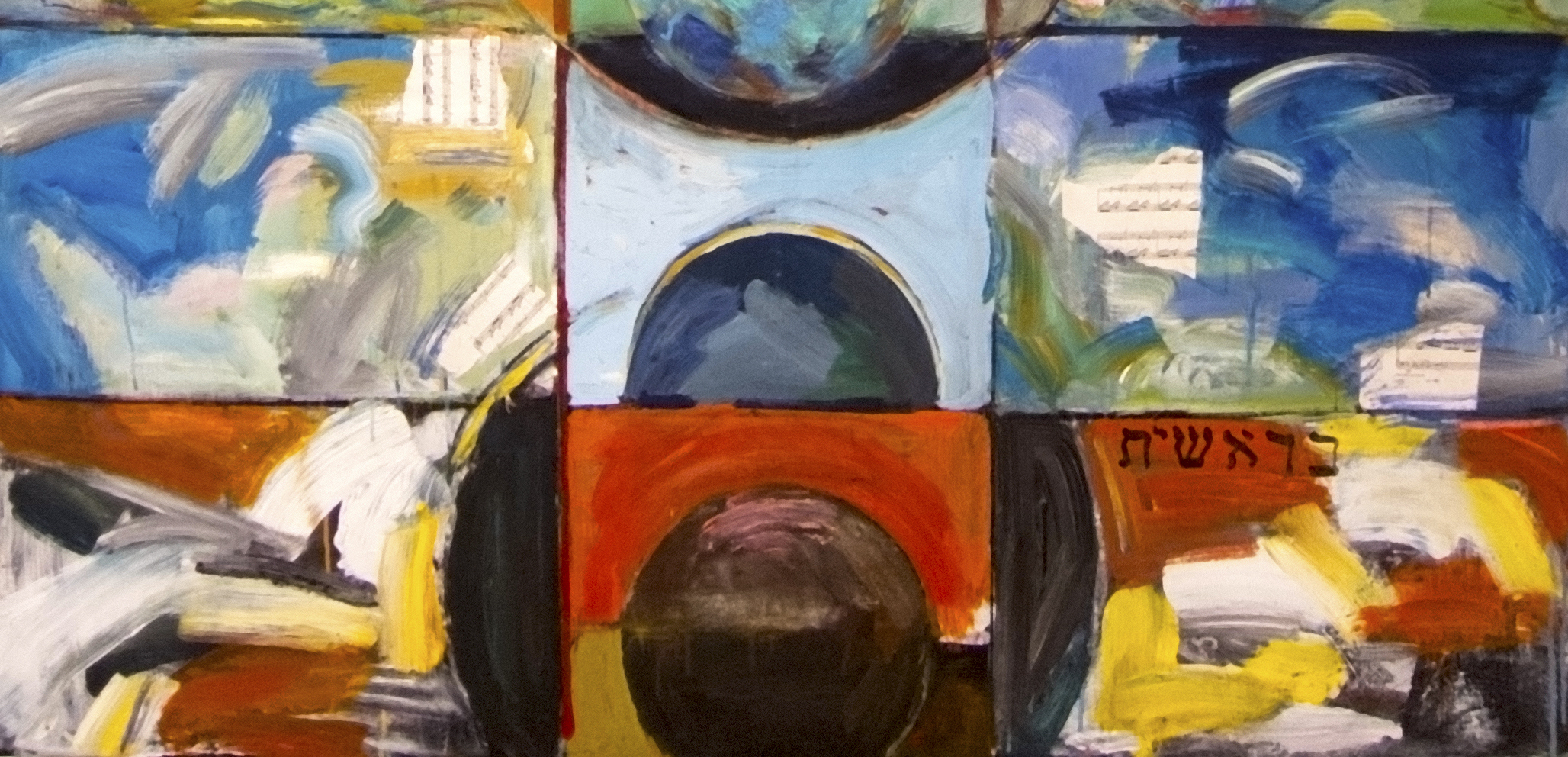Heubach Chapel Artwork by WWU Professor Martha Mason
“I will remember the deeds of the Lord; Yes! I will remember Your wonders of old. I will ponder all Your work, and meditate on Your mighty deeds.”
-Psalm 77:11-12
The inspiration for the Heubach Chapel artwork is the doctrine of Creation. It's design is based on the creation illustration found in the New Saint John's Abbey Bible using seven separate panels to represent the seven days. Instead of horizontal progression from left to right, this mural is based on a vertical progression of days from the lowest panel representing the first day and creation of light, up through successive days to Sabbath. The vertical axis of the whole forms a cross design as it intercepts the sixth panel showing the creation of mankind. Circles and arcs are design elements and create echoes of the perfection of God and the faint reminder of his presence even in the shape of the earth itself.
Black and white torn shapes on the first day and the Hebrew words "in the beginning" feature both the most fundamental entry of Divine Light and the potent fiat of the Divine Word of God to create. An atmosphere is suggested in the dome shapes and cloudy formations on the second panel, which features blues, whites, and grays. The third day denotes the rapid formation of the continents, oceans, and living greens and two maps from the Western States are collaged there to bring the creation "home" to a local audience. The fourth panel refers to the planetary heavens with its complementary colors and its order and mysteries. The fifth day is dominated by ocean and air, life forming in their atmospheres of blues. The early Christian fish symbol is also there to connect the viewer with Christ as Creator throughout his entire Creation. The dove of the Holy Spirit in the New Birth or regeneration is placed over the "heart" of the cross, where horizontal and vertical axes meet. The world of animals and mankind is represented in the sixth panel that uses colors of the earth suggested in Genesis 2 and symbolized by a locally familiar animal and a symbolically drawn human family.
The Sabbath is the top panel and the colors progress through the hues associated with perfection and eternity: red, lighter golds, and metallic gold. The circles and arcs lead the viewer beyond the vertical boundary to suggest infinite space and time as the climax of the gospel in symbolized in Sabbath's where eternal rest is experienced and prefigures the Second Coming of Christ.
The University Church family is incredibly grateful to Martha Mason for her generous gift of art.
This weekend we reminisce on the history of the Seventh-day Adventist church. In particular, we remember the ways God shaped this movement through Ellen White, who passed away 100 years ago. The North Pacific Union Conference has invited two guest speakers to be with us.
Dr. Jonathan Thompson is the Director of the Ellen G. White Research Center at Oakwood University. He is offering our sermon today and lecturing at 3pm this afternoon. Dr. Cindy Tutsch is the retired Associate Director of the Ellen G. White estate. She speaks at vespers Friday night and lectures at 4pm today. Both afternoon programs will be in the WWU Melvin K. West Fine Arts Center Auditorium.
MUSIC NOTE
We thank the many students of Rogers Adventist School for sharing their music with us. For many decades our local private elementary school has enjoyed a renowned string program that continues to thrive under the current leadership of Noel Jabagat. Please join me in thanking him and all of the Rogers School musical scholars.
In the postlude we hear the first movement of Brandenburg Concerto No.3 by the unsurpassed baroque composer Johann Sebastian Bach (1685-1750). The anthem presents an arrangement of the best known anthem by the Russian composer Pavel Tchesnokov (1877-1944). Tchesnokov’s reputation as a conductor and choirmaster led to his teaching appointment at the Moscow Conservatory where he had trained as a youngster. He composed more than 400 sacred choral works while directing the choirs at Moscow’s Cathedral of Christ the Saviour, the largest Orthodox Christian Church ever built, located just a few blocks from the Kremlin. After the Russian revolution when the Soviet state forbade composers to write sacred music, Tchesnokov produced about one hundred secular choral works. He ceased composing entirely in 1931 when Joseph Stalin ordered the demolition of the Cathedral of Christ the Saviour. The Cathedral was rebuilt during 1995-2000.
“Salvation Is Created” is one of the last sacred compositions by Tchesnokov, and he never heard it performed. As you prepare to worship, I invite you to silently meditate on the text given here. It is based on Psalm 74:12.
Salvation is made
in the midst of the earth,
O God. Alleluia.
-Kraig Scott







